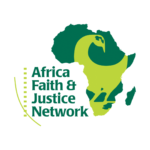By Ben Mwangachuchu, President Congo Peace Initiatives in the Kivus Inc.
The Sun City accord allowed the government of Congo to transition into a post war era by halting a regional war that opposed Rwanda and Uganda on one hand with its allied rebellions, Rassemblement Congolais pour la Démocratie (RCD), Mouvement pour la Libération du Congo (MLC), and Congo with its allied countries Namibia, Angola and Zimbabwe on the other hand. What the post transition government failed to do so far is a focus on Truth and Peace Reconciliation. A sort of a “table ronde” among Congolese people to get to the core issues of the problems that created the situation we are in.
Given a very limited time we have, and the vast intricate situation of the Congo we are covering, our proposal is limited in scope of “Possible Solutions”. We would need more time and appropriate forums to evaluate how far we came and the road map to an ever lasting peace in this Country. Nevertheless, we will try our best to give some talking points to allow participants to think about solutions that may bring peace in Congo.
I. The immediate and short term solutions to insecurity in Congo are:
1. Disarming by force foreign militias operating in eastern Congo such as the Democratic Liberation Forces of Rwanda (FDLR)/interahamwe, Lord’s Resistance Army (LRA), National Army for the Liberation of Uganda (NALU), Allied Democratic Forces (ADF) and National Liberation Forces (NLF)
- Securing civilians by assigning marked areas where they can be protected and fed while military campaign, that includes United Nations’ peace keeping mission (MONUC) and the Congolese national army (FARDC), target those foreign militias. Thousands of civilians are already in Internally Displaced Camps (IDP). This can be a starting point to protect them while pursuing military campaign.
- Create a buffer zone for those militias who wish to disarm voluntarily and be repatriated to their respective countries.
- Review the terms of “brassage” which is inadequate in its conception of 45 days with no basic standards in military training any where in the world.
- Payment of salaries to (FARDC) in timely manner, curbing down corruption within the military leadership that takes money away from soldiers for their own gain; thus creating an army that lives on people meager means.
- The Long Term Solutions to insecurity in Congo are:
Serious talk between the government of Kinshasa and Nkunda’s rebel movement, National Congress for the Defense of the People (CNDP), different Mai -Mais groups and PARECO (a Hutu militia in the Masisi and Walikale area) that have been waging a war on behalf or against the government.
1. A Truth and Peace dialogue needs to take place in the Eastern Congowhere the grassroots people are taken into account, with hands on representation of local ethnic group leaders, Clergy, military, and civilians, from different ethnic groups to sort out the root causes of the ongoing conflict.
- Repatriation of Congolese Tutsis who have been in refugees camps in Rwanda, Burundi and Uganda for the last 13 years
- Implementation of sound economic policies in this province to provide employment to many young people who often join the fighting for lack of hope and future.
- The effects of dehumanization, expulsion, and murder,
often advocated, even and especially by people in the leadership such as Yerodia Ndombasi who have made the Tutsi everywhere more concerned about security than any other ethnic group. It would be insane if it were otherwise.
How to obtain security? The Gerrymander approach is an alternative. It stipulates that security is local. This means that Tutsi and other ethnic groups of the region would have unquestioned control of the local security. One of the important issues about this war that needs a serious debate and needs to be restated here in order to find a lasting peace in Eastern Congo is the case of Congolese Tutsis both in north and south Kivu who have been used by many politicians on both sides for their political gain. Nevertheless, the truth is that many Tutsis have lived in fear since 1980 after a law promulgated by Mobutu regime striped them of their citizenship and the events of 1994 in Rwanda with millions of Rwanda refugees/ex-far/interahamwe was the last blow that broke the camel’s back. The Tutsi were expelled and tracked down by these militias and have been living in exile for 13 years. This situation created conditions for the 1996 and 1998 war. Without going into all the reasons that created this situation the truth is that there has been a xenophobic exclusion of Tutsi in Congo. Despite the presence of Tutsis in the institution of the new republic, the only place where they can live now is a small portion of Masisi, Rutshuru, Goma. Also, some Tutsis live in Mulenge, many in forest because of the ongoing war. This has given reasons for the CNDP to refuse integration in the Congolese army, unless the above problems are resolved.
We think it will take time to rebuild peace in eastern Congo. The government ofCongo has just signed a deal with the government of Rwanda to force the FDLR militias to leave the country. It is the right direction the government of Congo andRwanda has taken; now it needs to be materialized. To be effective however, a commission of various representative of the large community of different ethnic groups in Congo is needed to sensitize all on this military campaign. Every ethnic group in Congo; especially in the east; has been affected by this war. It will take justice, understanding and good will to resolve this problem.
